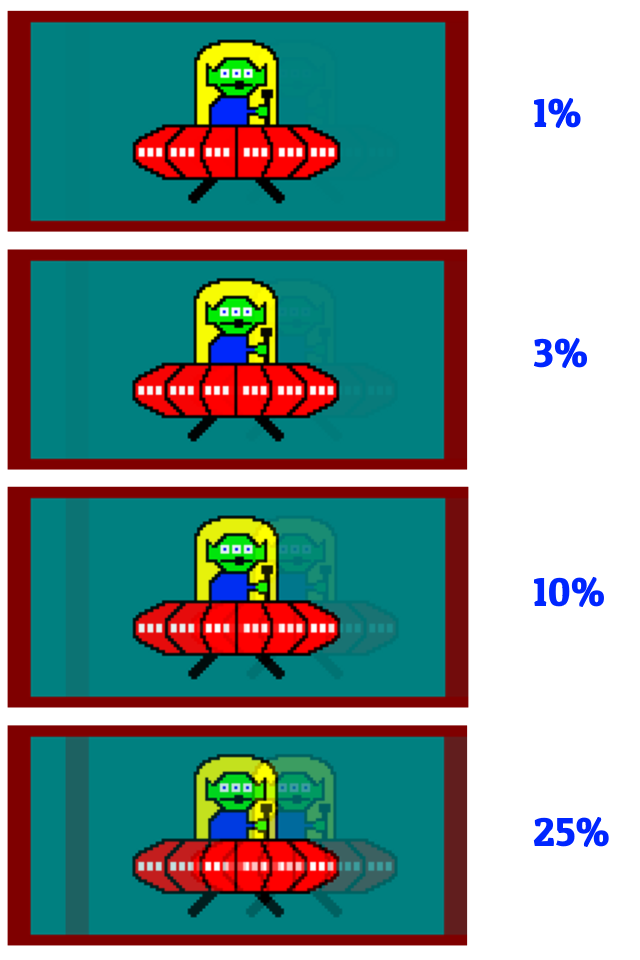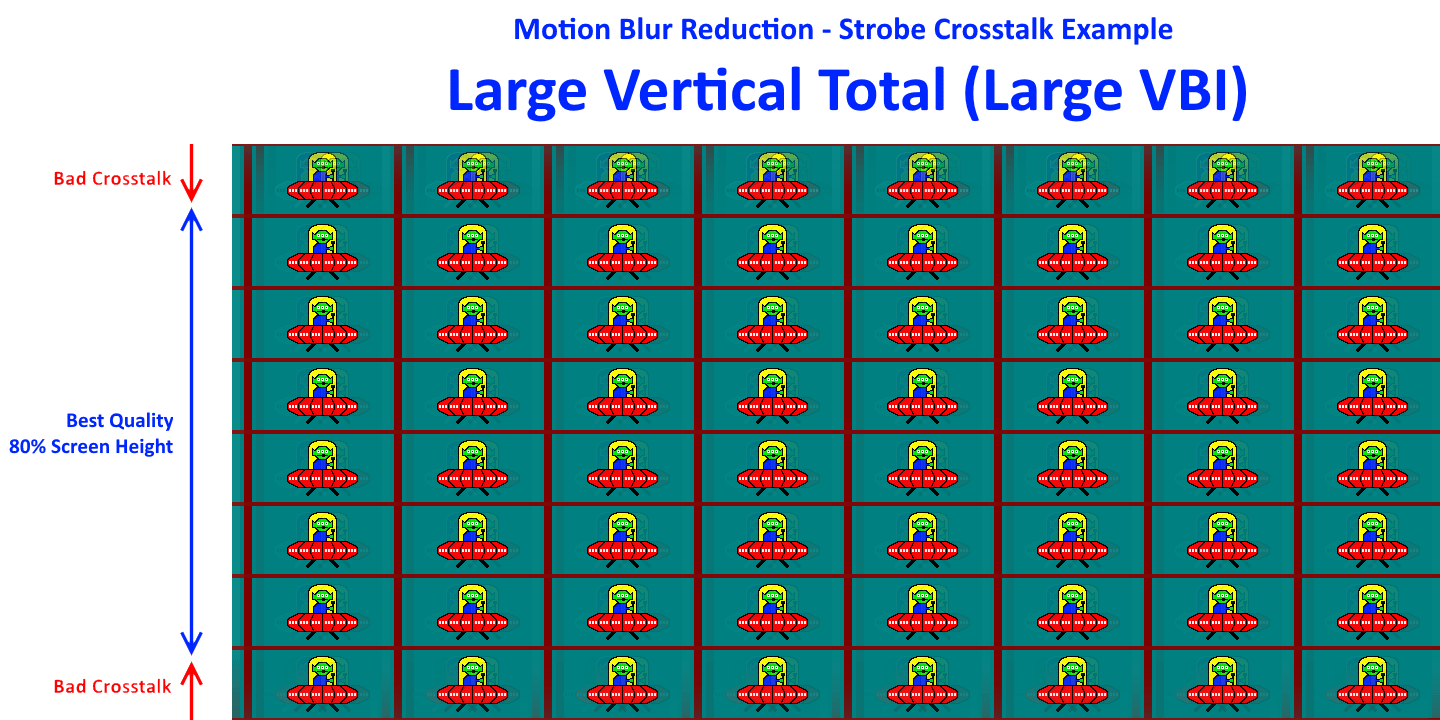JustAfan wrote: ↑26 Nov 2021, 16:20
As of this afternoon B&H has the XG2431 in stock for $299.99 as well. I'd get one myself but already have one enroute from BLT.
I guess I should eventually sign up to be an affiliate of BH Photo Video.

sunisc wrote: ↑26 Nov 2021, 03:10
When are we getting a VRR BlurBusters monitor?
Two different brands are currently in the works but it may not be for a generation ahead (e.g. 1 year, 2 years). I would not advise postponing your monitor-purchase plans since English-China communications has been incredibly difficult on strobed VRR nuances.
We were hoping for sooner but parts shortage / supply chain has bumped the HDLC (Hardware Development Life Cycle), so things like time between prototypes (EVT, DVT1, DVT2, PVT, MP) are stretched out unusually long, sometimes more than 2 years out. For one manufacturer, I've had a DVT2 shipped to me more than a year after a DVT1!!!
I cannot tell more details due to NDAs, but these are all industry standard workflows and nomenclature (
Info about EVT DVT PVT prototype naming lingo) so I am 100% freely allowed to talk about generics like this -- it's all publicly published. I just have the ability to explain this stuff into these forums in ways nobody else can...
___
People thought we would NEVER convince industry to do optional retro-friendly motion blur reduction (60Hz single strobe). We did. We certainly dropped the microphone, there.
We pull miracles (perfect zero crosstalk 60Hz single strobe modes, third party Strobe Utility support, our strobing is better than a giant corporation called NVIDIA. Remember NVIDIA limits ULMB of 240Hz monitors to only work at 144Hz because they don't want to see users how bad crosstalk is at 240Hz. We uncap this hard-limit and let users choose any Hz to strobe at. Strobe Utility now makes it possible to have better-than-ULMB (Hz for Hz) at any Hz, in 0.001Hz increments, rather than NVIDIA limiting you to just three strobed refresh rates (like 85Hz, 100Hz, 120Hz).
Strobe at a lower Hz for less crosstalk, or strobe at a higher Hz because you want higher Hz. Your choice. No strobe presets. No strobe caps. In any Blur Busters Approved monitor...
I am a mega-fan of NVIDIA and AMD of course. Blur Busters would not exist without NVIDIA and AMD because NVIDIA and AMD makes the GPUs that powers the refresh rate race. But I will boast that Blur Busters Approved 2.0 just hits a home run ahead of NVIDIA ULMB if you use QFT and Strobe Utility together.
sunisc wrote: ↑26 Nov 2021, 03:10
Why can't we have a perfect strobe phase setting? I seem to have top and bottom double images but perfect clarity in the middle.
That is simply a law of physics caused by LCD pixels not refreshing at the same time. You can see
high speed videos of LCD refreshing. Two things happen:
1. Each pixel "fade" from original color to new color. This is LCD GtG "pixel response".
2. Simultaneously, each pixel row begins their fade at a different time offset relative to beginning of refresh cycle. This is the "scanout".
This affects all brands, DyAc, ULMB, ELMB, VRB, PureXP+. There is no strobe phase possible because often
3 different refresh cycles are visible at the same time! (top edge has part of next one, middle has the main one, and bottom has the previous one). So there's no way to strobe only one refresh cycle.
Blur Buster's famous Year 2012 video teaches users how an LCD is strobed:
It's a mathematical impossibility when
LCD GtG is slower than the blanking interval of an LCD. If the idle period of a refresh cycle is less than the time it takes for LCD to reach GtG100% -- you are guaranteed to have crosstalk. Even crosstalk less than GtG90% is human visible, as per
Pixel Response FAQ: Two Pixel Response Benchmarks: GtG Versus MPRT.


So clever tricks are needed for the perfect crosstalk-free LCD concurrently with low input latency. You can buffer a slow 120Hz refresh cycle (slowly delivering over the cable in 1/120sec) and THEN scan it out in 1/240sec. Reducing crosstalk, but you added input lag because of the buffering.
We prefer QFT (Quick Frame Transport, aka Large Vertical Totals). This means the panel can refresh realtime on the fly off the cable (with only scanline buffering, not full frame buffering). So 120Hz refresh cycle transmitting over the video cable in 1/240sec, while the panel's chip (scaler/tcon) is refreshing the LCD at the same time in 1/240sec in realtime, in perfect cable:panel scanout sync. Scanout sync doesn't always happen (
see advanced diagrams of cable scanout diverging from panel scanout), and the input lag problems.
The good news is that XG2431 has a trick called QFT, that speeds up scanout. For example, a 60Hz or 85Hz or 100Hz refresh cycle can now sweep-out in 1/240sec instead of 1/60sec. This means LCD refreshes faster, and GtG can finish sooner in a longer blanking interval (pause between refresh cycles).
sunisc wrote: ↑26 Nov 2021, 03:10
Is there a defect in my monitor?
No, it's laws of physics.
To reduce this behaviour:
1. Reduce refresh rate. The better "PixelResponseTime:RefreshTime" ratio will reduce crosstalk.
2. Increase the blanking interval. The better "PixelResponseTime:BlankingTime' ratio will reduce crosstalk.
3. Retune your panel to your panel lottery/temperature. Colorimeters can achieve better-than-factory color tuning, and Strobe Utility can achieve better-than-factory tuning. This is because LCDs vary slightly, and you need to custom-tune your panel.
If you do 1/2/3, you can get perfect zero crosstalk at some lower refresh rates, with a great sweet spot at about 120Hz for PC gaming.
sunisc wrote: ↑26 Nov 2021, 03:10
I read that I can adjust vertical totals to help this. (need to do more tweaking).
Correct. Please look at the animated GIFs at
www.blurbusters.com/xg2431

Large VTs on the GPU side reduce crosstalk without increasing lag (because Large VTs avoid the need for full frame buffering in the LCD).
Making Low-Lag Low-Crosstalk Strobing Easier For Users
Easy Explanation:
I am pushing hard for a manufacturer to add a "Quick Frame Transport: ON/OFF" to the onscreen menu of their monitor.
Advanced Explanation:
Behind the scenes, in the programming of firmwares, this requires automatically replacing all EDIDs with QFT-recalculated EDIDs. I have come up with a Blur Busters QFT Formula that replaces GTF, CVT, CVT-R timings formula. It's a really simple formula that simply executes a CVT-R formula on max-Hz, and simply applies a QFT Formula to create all lower-Hz modes out of max-Hz CVT-R.
FreeSync ON/OFF in OSD already automatically replaces the EDIDs in an EDID-swap, so doing QFT ON/OFF would do something similar. However, no manufacturer has yet bit on the delicious easy plug-and-play QFT....
YET. (it's a shame, but manufacturers are too busy with catching up on pandemic/supply chains). So we are still forced to tell users to use ToastyX CRU.
Long term, I want manufacturers to add QFT EDIDs (e.g. enable "Quick Frame Transport: ON" to automatically enable custom plug-and-play EDIDs). This will enable users to avoid the need to use ToastyX CRU over the long term. But many manufacturers don't even understand some of the stuff Blur Busters is currently teaching them. Many panel ISVs are just trying to repolish AUO/Innolux/LG/Samsung/etc panels and know less about them than the panel manufacturers (who aren't responsible for strobe tuning). left hand, right hand. That's where Blur Busters comes in become the supplier of knowledge to monitor firmware vendors such as Suzhou Lehui, and get things tuned. Communication (and English/China translations) is sometimes about 80% of the work of Blur Busters Approved sadly, and sometimes it turns a Blur Busters profit into a break-even. It's a LOT of work, and the way Blur Busters is refusing to approve monitors without the strict Blur Busters Approved 2.0 criteria -- means very few units come out per year, and it can take years.
Eventually, we are trying to speed this up somewhat, perhaps by releasing our Blur Busters Display Tester (our in-house colorimeter-style accessory that we build to measure latency/GtG/MPRT/PWM/strobe/GtG-heatmapper/etc), but the pandemic put a hold on those plans. Boo.
Manufacturers will be able to use our hardware-based Blur Busters Display Tester to speed up engineering of their monitor. It will even be easy enough for small-time small-batch manufacturing (range of 100-to-1000 units of displays). This strategic release of limited run of Blur Busters Display Testers (eventually) will hopefully speed up manufacturers achieving Blur Busters Approved 2.0 ....
